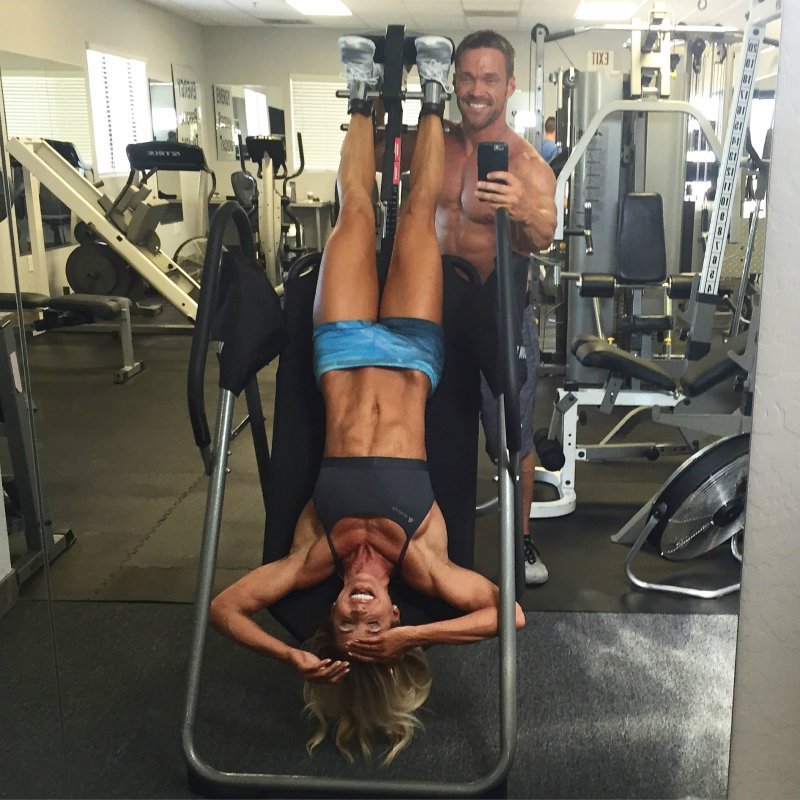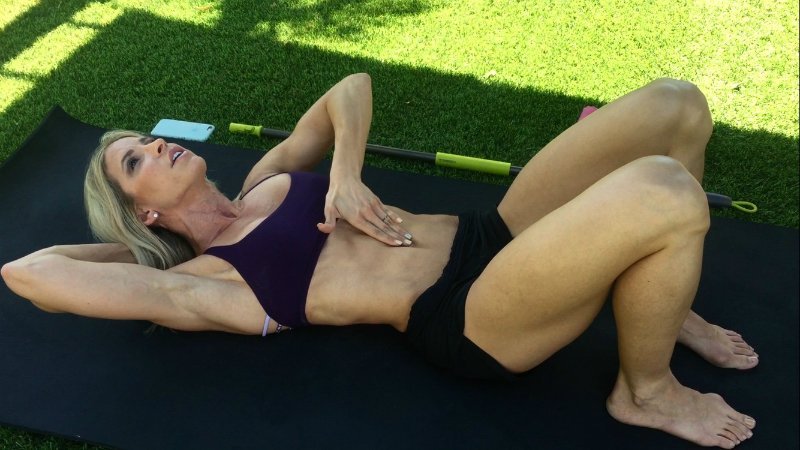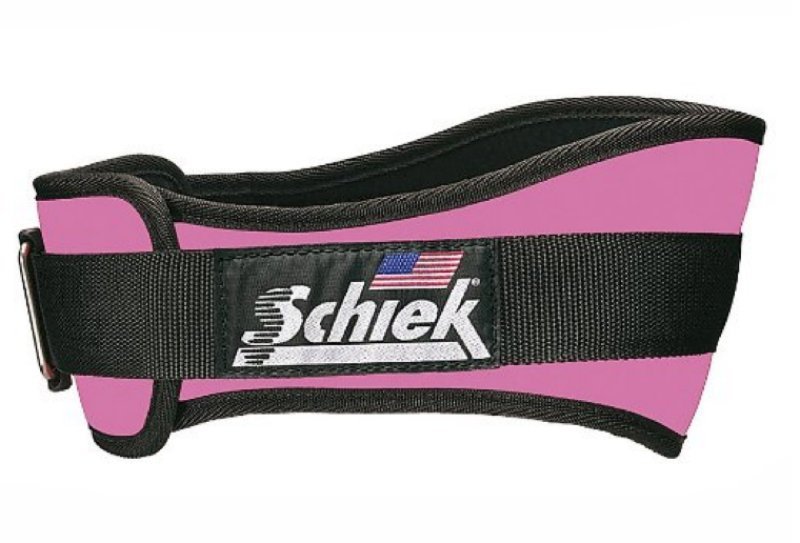Ok, here it is! Girl to girl, we need to discuss something I THINK is more common than I’ve ever believed! I’m getting a little personal and a little science-y on you today to talk about diastasis recti. Diastasis rect-who? Rect-ME! (Ok, stop).
I’m going to warn you up front. There is SO much to cover in this post—it’s a little long. If you wanna’ get straight to the meat (or the exercises you can do to fix your diastasis recti), scroll down. If you wanna’ learn more and figure out if you have this condition, keep reading.
Let me get you up to speed. Diastasis recti generally happens during pregnancy when the two large parallel bands of abdominal muscles separate due to the expanding uterus. Some women’s ab muscles go back to normal after the baby is born, and some do not…mine never have, and chances are yours haven’t either—which is why you are here.
The good news is that the diastasis caused by pregnancy can be corrected with exercises and stretches designed to optimize deep core muscular function. So ladies, don’t worry—your body wants to function right, and it will. We just need to wake up the right core muscles and teach them what to do! But let’s not get ahead of ourselves. Saving that for later.
Now how this happens and why it is worse for some women, no one is 100% sure. But we can hypothesize. It’s been said to be hereditary, but it may also be caused by working out your abs too soon after a baby is born, or even doing the wrong exercises WHILE pregnant. While I didn’t workout during ALL of my pregnancies (just the last 2), I personally feel like working my abs hard during prego worsened my condition. But that’s just my opinion.
Crazy fact, I didn’t even notice my ab separation until after Cash was born!! Yes, 3 kids later. I mean, I knew it was there, but I didn’t realize it was a medical condition. Embarrassingly enough, I always just thought I had definition down the center of my abs! Ha! Nope…wishful thinking. Just diastasis. Once I realized this odd look my midsection had wasn’t normal, nor was it normal for me to be able to literally stick my hand inside of my abs and touch my insides with just skin separating, I knew I had to do something about it. If you’d like a visual, just check out the pic below. This was posted on social media a couple of weeks back, and I got an overwhelming response from women (you!) that suffer from the same condition…
From a medical standpoint, until recently, I had a little over a 3-finger sized gap between my abs that was physically unprotected. Like I said, intestines…right below my skin. And during certain ab exercises, my insides would actually protrude through my abs, forming a weird point. Disgusting, I know. And it’s even scarier to think how vulnerable my vital organs were. If this went untreated, I could suffer from a major intestinal hernia, and given my level of activity (and types of heavy lifting), chances of this happening are higher than most. I mean, I already have an obvious umbilical hernia (my dramatic outtie belly button) so I figure I am more prone than most…
Extensive research on the topic taught me a few things…one of them being there are a handful of factors that make a woman more susceptible to diastasis recti:
- Having more than one child/pregnancy
- Having pregnancies close together
- Being?over the age of 35
- Having big babies
- Having multiple births
I know…some of you are looking at this ist realizing you’ve been double—or even quadruple—whammied! (I?m raising my hand to a couple). Don?t beat yourself up about what you cannot change because diastasis recti is very common—about 67% of all postpartum women have it. So you (and I) are in good company.
If you’re not sure if you are among the lucky few who steered clear of this pregnancy consequence, here’s an easy way to check:
- Lie on your back with your knees bent, soles of your feet close to your booty.
- Place one hand behind your neck and the other hand on your abdomen with your fingertips flat at your belly button, fingers facing downward.
- Gently push your fingertips into your abdomen while rolling your upper body off of the floor, chin towards the ceiling.
- Feel for a separation between those two ab muscles. Experts say that a 2-2.5 finger or more spread signals diastasis recti.
Now, let’s talk about our options moving forward. We can go the immediate and potentially easy (but expensive) route with surgery. BUT, surgery is not always recommended if you are still in your childbearing years…I mean think about it, one more baby, and you’ll pop those abs right back apart! As well, there is no guarantee that surgery will be 100% effective. (SIDE NOTE…Research on this topic started once Chris told me NO to this option because he wants more babies! Another topic for another day…but…).
So for me, at-home exercises and remedies are the way to go. Anytime I can avoid going under the knife, I will. And worst case? If the exercises don’t work, surgery as an option is always going to be there.
Before we go farther—a very important disclaimer: The following “fixes” are all based on my experience and my research, so please check with your doc BEFORE doing anything for your diastasis recti since each case is different. Okay, here goes:
Over this past year, my training protocol has changed as I have transitioned from CrossFit-style workouts to body building. Along with the training change-up, I changed the way I worked my abs too, focusing on decreasing (actually eliminating) the typical ab exercises and increasing the deep-core muscle exercises. I am happy to report that over this year, my abdominal muscle separation has decreased dramatically to less than 2 fingers!! But it still isn’t quite where I need it to be to consider myself healed.
The proof is in the pudding for me: A lot of this boils down to doing the RIGHT exercises. I realize that for so long I was doing what I intuitively thought would work (swing ups, sit ups, V ups, knees to bar, etc), but in reality, these move were working against me by ONLY working my Rectus Abdominus. The REAL muscles that needed working are known as the Transversus Abdominus and Lumbar Multifidus. These are the the most neglected of the ab muscles, but also happen to be arguably the most important. They lie beneath the Rectus Abdominus, supporting posture, controlling breathing during heavy lifts, and supporting the back. These are the muscles elite athletes work to add explosive power to training and are also the muscles we mamas need to work to relieve back pain, create a tighter midsection, AND improve our diastasis recti.
Some at-home exercises you can do to focus on these important muscles are below. I’ve also recorded a demonstration video for you (at the bottom of the post) so you can SEE how to perform these moves right and hear my instructions. Make sure that when you do these moves, you focus and move slowly—keeping the mind body connection. In other words, don’t just go through the moves. You’ll notice that breathing is a KEY component to all of these movements: Deep inhales, and exhale when you activate the muscles.
-
- Drawing In Exercise: Now technically every single move listed below requires you to “draw in,” so I figured I would do a little explaining. Drawing in is NOT sucking in (which uses the outer muscles). Drawing in is done by allowing those inner muscles to pull your abdomen deep inside toward your spine. Draw in from the lower region of your abs. Drawing in is something you can do in sets for as long as you can hold (work up to 60 seconds at a time), or it’s something you can simply do as you walk around your house. Believe it or not, your posture will improve big time with this! This can be done standing, sitting, lying down…you name it. Just DRAW IN!
- Vacuuming: No…not vacuuming your carpet (although I guess technically you can vacuum ON your carpet). I’m talking about the core exercise known by this name. I know I’ve talked about this before, but I’m going to talk about it again. Easily explained, simply stand up straight, inhale deeply, followed by an exhale. Once all of the air is deflated from your lungs, draw your belly button in and up toward your spine. HOLD (as tough as it is) for as long as you can. I aim for 30 seconds, but if holding your breath that long isn’t doable, simply keep the clock running and keep your belly button in and tight as you slowly breathe for the remainder of the 30 seconds. Try for 5-10 reps a day.
- Broomstick Rotations: With a dowel or a broomstick behind your neck, perform a vacuum, then when all air is exhaled and you are holding your breath with your abs squeezed, slowly rotate from side to side until you cannot hold your breath any longer. Breathe. Repeat 5-10 times.
- Abduction with Core Activation: Lie on your back with a resistance band around your knees. Exhale, engage your core and pelvic floor and pull your knees apart. Relax, inhale, and repeat for 10 reps. Be sure to keep your spine neutral and don’t press your lower back into the ground.
- Heel Slide: Lie on your back with both knees bent, feet flat. Exhale as you engage your core and pelvic floor, and slide one heel slowly along the ground until your leg is straight. Inhale and relax, then engage your core, exhale, and draw that heel back. Do 5 reps on each leg.
Once again, scroll to the bottom for my step-by-step video.
Now when it comes to traditional training and weight lifting, consider wearing a weight belt. It has worked WONDERS for me. Not only will a weight belt support your core while lifting heavy loads, but more importantly, it will act as a cue/reminder to activate and draw in with your core while lifting. Otherwise, we are naturally prone to distending our bellies during heavy lifting, only worsening our diastasis recti. This is the one I use…
So ladies, however you choose to take care of your diastasis recti, whether DIY exercises or surgery, know you are making the choice that is right for you! It’s a medical condition and not just a vain aesthetic concern, so if surgery is what you choose, then surgery it is! But if exercises are your method of healing, please keep me up to speed on your progress.
And in the meantime, have those babies, LOVE those babies, and appreciate every consequence of having such perfect little miracles! #BattleWounds
And finally…the demonstration vid…;)
Xoxo,
Heidi
Related reading:
Ask Heidi Anything: Carb Cycling While Prego?
My 1st Post Ruby Workout
My Pregnancy Workout: The Nasty 9s
My 5 Gym (and Home Gym) Must-Haves






262 Responses
I have a 4 year old and watching this really answered my tummy problems. I have this and no doctor tells you anything about this. I have been working out, is it too late for me to fix my DR?
Hi Robyn: It’s hard to tell, but see what your doctor says. We wish you the best!
Just found out I have a mild D.R. (1 finger) after my second c-section. I’ve been doing these exercises and a few more to try to repair it. I’m getting discouraged though b/c I’m not doing any other ab work besides these exercises and I feel as if my abs aren’t developing. Do you do additional abdominal work to keep your core so fit, or is this all you focus on? I guess I’m just scared to make the D.R. worse :/
Hi Jennifer: I don’t believe Heidi does any other ab work. You do engage your abs/core in many other exercises, so you should be good to go! And the most important thing is to repair that DR for now.
Hi Heidi, I just became a new mom 10 months ago and I noticed only 6 months after giving birth that I wasn’t really losing that mommy pooch. I was confused and did a little research on the matter. Turns out I have a 2-finger DR. I was shocked because it’s been my first pregnancy and my baby was born with an average weight and height. So I desperately ran to a Physiotherapist for help since I wasn’t really excited about getting surgery as well. My DR visibly improved after a 2-month therapy program but I’m afraid a sedentary job (I’m an EN<ES Translator) and a busy lifestyle is overturning all my hard work. I hope these exercises will help my condition. Also, I was wondering…I was told not to do any oblique twisting whatsoever for it could worsen the condition, is this true?
Thanks for the vid! Can't wait to try this exercises!
Hi Carolina: Since what works for each woman with DR can be different, it’s best to discuss any exercises with your healthcare team first. 🙂
Loved this post! I just wanted to give a shout out that everything you’re describing is PILATES yay! I’m a Pilates studio owner and have worked closely with pre and post natal clients as well as having twins and a singleton myself! It’s always so refreshing when mainstream fitness recognizes the importance of the Pilates foundational principles and begins incorporating them into their routines! Thank you for getting this vital information out there!!
Thank you for the video. I’ve been doing a lot of research the past few weeks after I discovered “Egore” protruding out of my belly one day. I have never had a child but at my top weight I was 312 lbs. I am now 230 and seriously beginning the building muscle journey of my weight loss. But when the small football size bulge showed up emerging out of my gap, when doing leg lifts, research began. My doctor has diagnosed me with a two finger space though it seems more with such a large protrusion during any ab work. So obviously crunches are out. I am eager to begin the exercises in your video as they look to be safe yet functional to strengthen my very weak transverse muscle. My posture has been out of alignment for many years so I know it won’t be overnight, but I’m tired of the extra bulge above my belly button that hangs over my pants even more than the extra skin hanging on the lower stomach. So to all your readers, DR is not just for the moms. Obesity can do the same thing to the body as a baby. I’m working on fixing 25 years of body abuse and I know this will get me on the right path. Thank you. Mary
Hello!
This is a great article by the way! There are so many things out there, it’s hard to sift through everything, and determine which exercises are best, which are worth paying for, etc. In addition, there are some doctors (mine included) who don’t know much about the condition, which makes it all the more frustrating. My goal throughout this journey is to fix my issue without surgery. I first need to determine if diastasis recti is in fact what I have. I’ve been having trouble losing my “mommy tummy” – in the form of upper belly fat. My youngest turns 2 this month. I’ve lost 40 lbs, and I’m at a healthy BMI/weight, but still look pregnant. I’ve done the self test, and, to me, my gap doesn’t seem to be that wide, but more deep (my fingers fit past my knuckles). I also have the vertical “mound” when I activate my abs, is this actually my organs? I guess I’m wondering if there are any exercises that would benefit closing a deep gap, as opposed to a wide one? Thanks in advance 🙂
Hi Christy: It would be best to discuss this with your healthcare team since every case of diastasis recti – and the correct treatment – can be different for each woman. 🙂
Hi! Thanks so much for your post. There are a lot of doctors that don’t even know how to take care of this problem. I’ve been told that I can do whatever exercise. Which is very wrong! I have done lots of research on this topic. Great to have someone like you share your experience. I’m curious through, with your exercises how often do you do each one? Every day? How many times a week? Thanks for all you do and being a great role model. Because of wrong advice from specialists I. Afraid I might need surgery from making it worse.
Aloha Heidi, thank you for your encouragement and for your exercise tips. I will try to do them. I have more than a 5 finger seperation. Had no idea it was a condition. Just knew I had a magic trick of making a hand disappear through my belly button after my 2nd child and got worse after my 3rd but failed pregnancy. It gives me hope That maybe I can have my body back. Every other area of by body seems to be tightening except my stomach region where I still look pregnant and I’m so not. I do crossfit as well but I’m not a crazy cross fitter. I’m all about the modifications sincere. I’ll be sure to try to substitute all the DR ab work outs for any other when I go to classes. Thank you again. I hope to send you good reports.
Mahalo Nui. Aloha,
Bianca ?
Don’t know how the word “sincere” got in there. That’s a typo. ???
Well, I’ve been doing the vacuum and pull in for quite some time but am looking forward to trying your exercises. After 8 births (9 pregnancies) I have a larger than 8 finger separation. I’m severely overweight but have lost almost 40 pounds (54 more to go) and my youngest is 15. I am not sure if exercise alone can deal with such a severe DR, but I’m willing to try.
Hi, My OB just tells me not to lie flat on my back after the 3rd trimester and that, “since I’ve always been so active, it’s fine to do any pre-pregnancy work-outs during the pregnancy.” So my question, is can I do the 5 exercises during the pregnancy? My prenatal Chiropractor said to refrain from the same exercises you have mentioned, but didn’t impart any new exercise routines.
Hi Faye: It’s always best to follow the recommendations of your healthcare team since they know your health history. And congratulations!